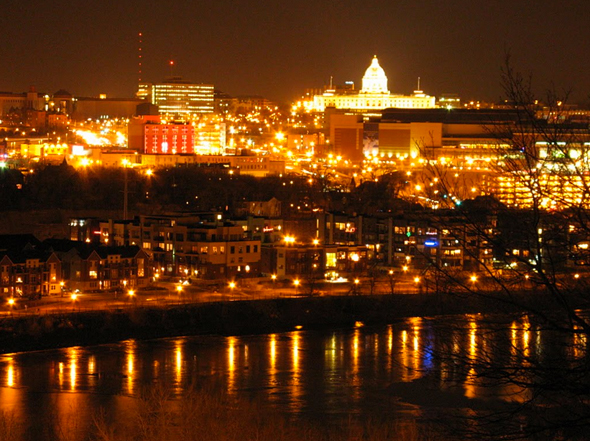How to Unbox the Twin Cities of Hyderabad and Secunderabad
Saved under Community, Current Stories
Tags: Baytown, Clear Lake, Cypress, Desi news, Greater Houston, Houston, Houston Desi news, Hyderabad, India, Indian American community, Indian News, Indians in America, Indo-American News, Katy, NRI, pearland, Secunderabad, south asia, South India, Sugar Land, Texas, USA
By Mohan Guruswamy
HYDERABAD: Hyderabad is the 24th largest city in the world. The twin cities of Hyderabad and Secunderabad have 5.3 million people living in 172 sq km and by 2030 will be home to 10.15 million. This will mean more motor vehicles, more commuting, congestion, effluents and chaos. The twin cities are among the most congested and air polluted in the world, because almost two thirds of the Greater Hyderabad Municipal Corporation population is concentrated within them.
Hyderabad is almost on par with Bangalore and Bangkok in air pollution. It has a Pollution Index (PI) of 79.98 compared to Bangalore’s 80.56 and Bangkok’s 79.08. The PI is an estimation of the overall pollution in the city. The biggest weight is given to air pollution, then to water pollution/accessibility, the other two main pollution factors. Ditto for the Pollution Exponential Scale (PES) which is arrived at using an exponential scale to show very high numbers for very polluted cities, and very low numbers for unpolluted cities.
India’s most polluted city using this composite scale is Kanpur with a score of 182.98, but Hyderabad is not very far behind with a score of 143.36. Compared to it Shenzhen, China’s biggest export center, has a score of 149.75 and the world’s most built up and among its largest cities, Shanghai, has a score of 155.86. It should come as no surprise that Indians have a 30% lower lung function compared to Europeans.
Traffic congestion on road networks occurs as use increases, and is characterized by slower speeds, longer trip times, and increased vehicular queuing. As demand approaches the capacity of a road, extreme traffic congestion sets in. When vehicles are slowed or stopped by traffic congestions and jams they spew forth huge concentrations of air pollution. Interestingly Hyderabad is not among the top India’s car owning cities, but yet its air quality is among its worst.
Clearly the solution to Hyderabad’s increasing pollution and traffic congestion is to spread out the city more evenly. But this will not be helped by the Chief Minister, K. Chandrashekhara Rao’s, recently expressed intentions of building a new Secretariat at Secunderabad’s historic Parade and Gymkhana grounds, and to build a high rise city center around the excessively polluted Hussainsagar. By doing this he will only heap more misery into the lives of Hyderabad and Secunderabad residents.
Rao would be better advised to pull down the ramshackle State Secretariat and move it to a more open and well-located part under the GHMC. For instance, by moving to the eastern side, say on the Hyderabad-Bhongir axis, the new Telangana State can relocate its administrative capital with modern, spacious and spread-out office and residential areas, like Gandhinagar is to Ahmedabad.
The Hyderabad-Bhongir axis is perfectly suitable because of the ready availability of government owned vacant land and the existing transport infrastructure. It lies on the main Secunderabad to Kazipet rail link that joins Delhi in the north, Calcutta in the east and Madras in the south. The construction a new mega rail terminal here will reduce the pressure on the Secunderabad terminus and ease the congestion around it. The new Metro line also begins at Nagole and by extending it a bit more the new capital area will be linked to the Metro grid. The outer ring road also gives it fast access to Shamshabad airport.
The expansion avenues for the twin cities are quite limited considering they are hemmed in the north by the cantonment and military facilities. Its expansion towards the west is limited both by Air Force Station Begumpet airport (established in 1968) which now sits plumb center in Secunderabad and by the Sanatnagar and Balanagar industrial areas. The only direction the urban habitation can extend is between the east and south. Instead of seeking to repossess the Parade and Gymkhana Maidan’s from the Ministry of Defence, the State Government should repossess Begumpet airport and build a new financial and commercial center for the twin cities. Any new construction in Secunderabad’s only open space will be restricted in height because it comes in the Begumpet flight path.
While the Metro will help in decongesting, it will also serve to build traffic pressure along its arteries and stations. To keep this pressure low, the twin cities need a secondary mass transit system, like a monorail to crisscross between the major transport arteries. Monorails cost a lot less, and require lesser space on the ground and will allow more trains and routes.
Rao broke tradition by holding Telangana’s first August 15 event under the watchful ramparts of Golconda fort, which is a central part of Telangana’s history. Likewise he must break the mold and build a new administrative capital, equally for the sake of posterity, as it would be to save the twin cities from choking to death on its air and drowning in its liquid effluence. Rao has shown himself to be capable of out-of-the-box thinking and now needs to put it to use to unbox the twin cities.

